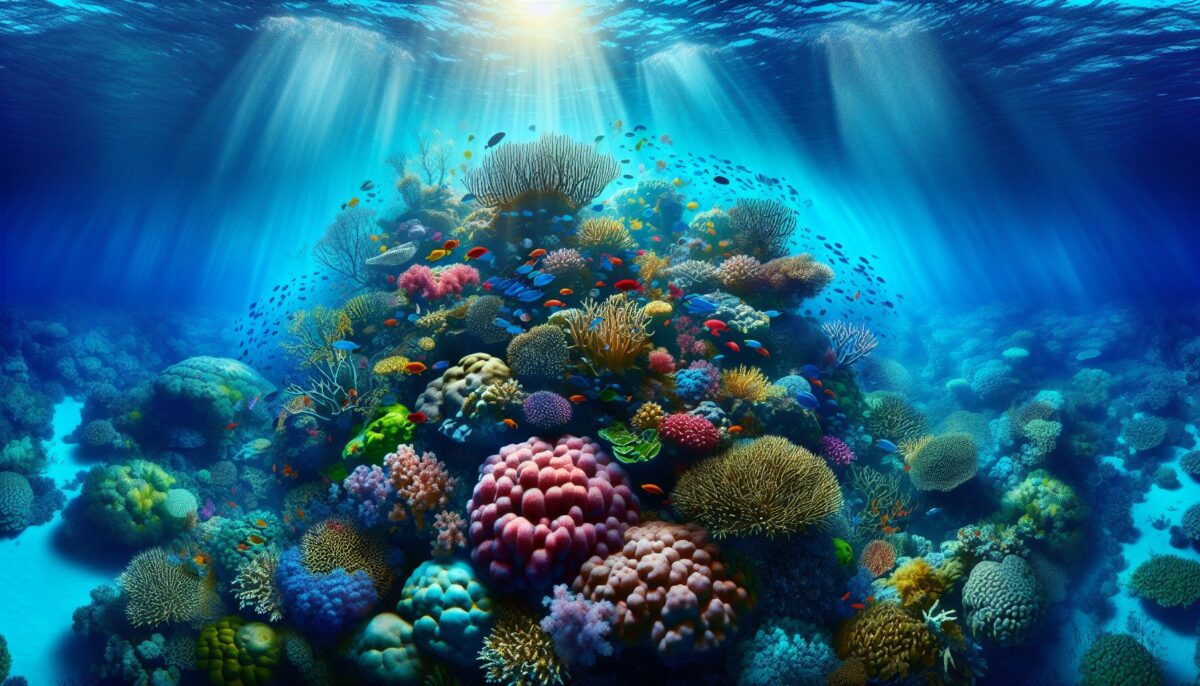Coral reefs, often called as the “rainforests of the sea,” are one of the most biodiverse and productive ecosystems on this planet. They cover less than 1% of the ocean floor, yet they inhabit around 25% of marine species. In this article, you will learn about the formation of coral reefs, their importance, the ongoing threats to their existence, and what we can do to help.
How Coral Reefs Form
Coral reefs are the product of thousands of years of growth from tiny, soft-bodied animals known as coral polyps. A single polyp lives inside a shell it has secreted, and in large numbers, these polyps form large colonies termed as corals. The magnificent structures of reefs that we see are essentially the accumulated shells from these colonies.
Reefs thrive in warm, clear, shallow waters, typically in tropical seas where the sunlight is plentiful. This enables the corals to engage in a symbiotic relationship with microscopic algae known as zooxanthellae, who live inside the coral polyps and use the sunlight for photosynthesis. In return, these algae provide the corals with organic nutrients which they produce as by-products.
The Importance of Coral Reefs
Often dubbed as the “rainforests of the sea,” coral reefs function as a hotspot for marine biodiversity. They serve as a shelter, feeding grounds, and nursery for a vast array of marine life, from the tiny planktons to the larger predators.
Coral reefs also play a crucial part in maintaining the planet’s overall health. They act as a barrier against storms and hurricanes, reducing coastal erosion and preventing the loss of life and property. Furthermore, they participate directly in carbon and nitrogen fixing, helping to regulate global cycles.
Also, these reefs play an integral part in the blue economy. They support fishing industries, contribute to tourism, and could potentially harbor medicinal compounds benefitting human health.
Threats to Coral Reefs
Coral reefs around the globe face significant threats mainly due to human activities. Climate change, resulting in raised sea temperatures, poses the most substantial risk. It leads to a phenomenon known as ‘coral bleaching,’ where stressed corals expel their symbiotic algae, causing them to turn pale and potentially die.
In addition to this, overfishing and destructive fishing practices destabilize reef ecosystems. Regular exposure to water pollution and marine debris damages the coral tissues, making them susceptible to diseases. Moreover, unsustainable coastal development and offshore drilling also disrupt the health and growth of these marine ecosystems.
Actions to Protect Coral Reefs
While the situation seems dire, hope is not lost, and efforts have been taken globally to conserve our precious coral reefs. Marine Protected Areas (MPAs) serve as critical tools in reef conservation, providing a sanctuary where species can thrive without human interference.
Raise awareness about the plight of coral reefs and advocate for sustainable practices in your community. Reduce your carbon footprint to help address climate change. Lastly, when visiting coral reefs, follow the guideline “Take only pictures, leave only bubbles.”
Coral reefs are a testament to nature’s splendor and resilience. They are vibrant, teeming ecosystems essential for marine life and human society alike. However, they are under severe threat, and their preservation requires immediate and sustained efforts from all of us.
Links
